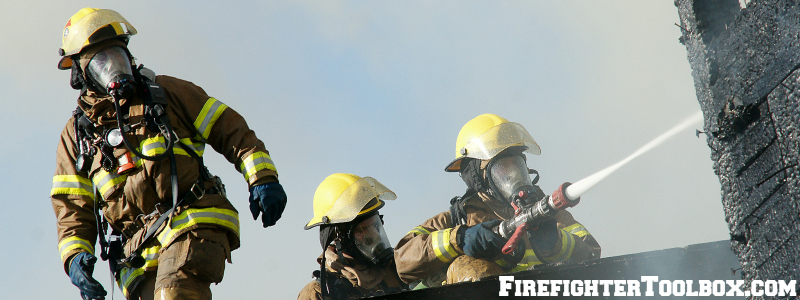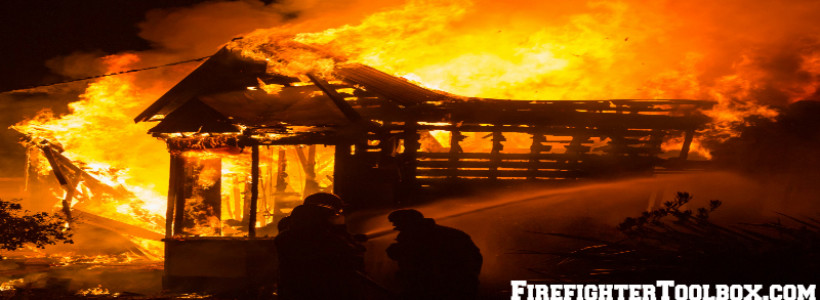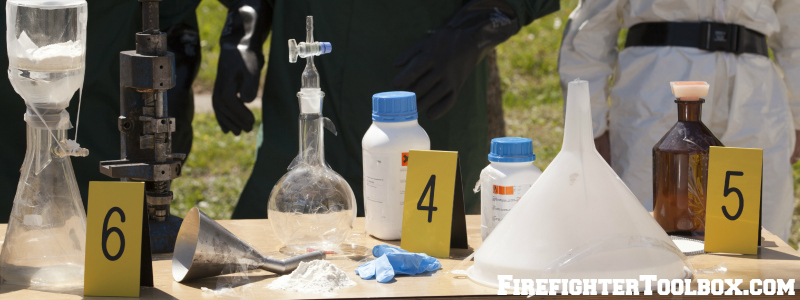Firefighting and Clandestine Drug Labs – Part 2
In part 1 of Firefighting and Clandestine Drug Labs, we gave a general background and how to recognize a clandestine drug lab (CDL) on the fire ground. In this article we will review the hazards that can be present at a CDL and some response guidelines for firefighters.
Hazards Present at CDLs
The list of possible hazards at a CDL is seemingly endless for firefighters. Unfortunately, there are numerous toxic, corrosive, flammable, explosive and carcinogenic chemicals that are used in the production of meth. When battling a fire at a meth lab, we are confronted with even more toxic vapors than in a “normal” structure fire. It is imperative that we use our full turnout gear, SCBA, and facemasks when confronted with a meth lab fire.
Since meth is so valuable, its producers will use improvised security (i.e.- “booby traps”) to dissuade first responders. Some of these hazards include: holes in the floor, trip wires with guns or improvised explosive devices, guard dogs, acid bombs, boards with protruding nails, etc. In addition, most CDL operators will be under the influence of meth, alcohol, or other illicit substances. Therefore they may be agitated, violent, delusional, and/or armed with weapons.
Experience has also shown that other hazards include electrical (shock) hazards from non-code wiring/light switches, increased risk of trips/falls due to hoarding conditions, cold injuries/exposures from working with compressed gas cylinders, and asphyxiation hazards from solvents that settle in confined spaces.
Response Guidelines
Once we have positively identified a meth lab, the interior crews may want to follow these guidelines:
- Immediately exit the structure and notify the Incident Commander and/or Dispatch.
- Continue wearing SCBAs/facemasks until decontaminated with hose streams. If not previously masked-up, don your facemask and go on-air.
- Any interior fire within the structure should now be attacked from a defensive mode until extinguishment is achieved.
- If the fire is water-reactive (due to meth-manufacturing chemicals), the fire may be allowed to burn itself out. Protect nearby exposures by confining the fire to the structure of origin.
- Establish a safety perimeter with exclusion zones (hot, warm, cold) and treat the fire as a hazardous materials incident.
 Decontamination Procedures
Decontamination Procedures
If involved in a meth lab fire, follow these steps to reduce the risk of cross-contamination and carcinogen exposure:
- Wash your hands before going to the rehab sector.
- Before leaving the scene, use cleansing body wipes to remove surface contaminants from the skin.
- Remove turnout gear/PPE as soon as possible and avoid wearing it until it can be properly cleaned in an extraction washer.
- Upon returning to the engine house, take the time to launder all duty clothes in an extraction washer.
- Shower as soon as possible.
If our crews are called to the scene of a meth lab for the purpose of “standing by” and no eminent fire or medical emergency exists, hazardous materials crews may need to be called to the scene for the purpose of decontamination. The arriving Haz-Mat crews can wear Level B PPE, but Level A PPE might be desirable for the purpose of vapor protection. Follow your fire department’s SOGs for the most appropriate course of action.
Fires involving clandestine drug labs are extremely dangerous and should therefore be viewed as hazardous materials incidents. Recognizing and safely operating at a CDL require a heightened level of situational awareness for all personnel on the scene. On the fire ground, if you think that you have detected a CDL, advise all personnel as soon as possible—everyone’s safety depends on it.
Have you responded to a fire that involved a clandestine drug lab? Please offer your perspective in the comments section below.
Photos courtesy of dollarphotoclub.com
References
Hadlock, T. (2012, Feb. 2). “Clandestine Drug Labs Present Hidden Dangers for Firefighters.” Fire Engineering. Retrieved from https://www.fireengineering.com/articles/2012/02/clandestine-drug-labs-present-hidden-dangers-for-firefighters.html
Michael, J. D. (2008, June 1). “Firefighting in Clandestine Drug Labs.” Fire Engineering. Retrieved from https://www.fireengineering.com/articles/print/volume-161/issue-6/features/firefighting-in-clandestine-drug-labs.html
Resac, J. C. (2001, Oct. 16). “Development of a Clandestine Drug Laboratory Standard Operating Guideline: Executive Analysis of Fire Service Operations in Emergency Management” Retrieved from https://www.usfa.fema.gov/pdf/efop/efo33153.pdf.
Vernon, A. (2009, Dec. 15). “Clandestine Drug Labs Pose Serious Dangers to Responders.” Firehouse. Retrieved from https://www.firehouse.com/article/10470318/clandestine-drug- labs-pose-serious-dangers-to-responders








